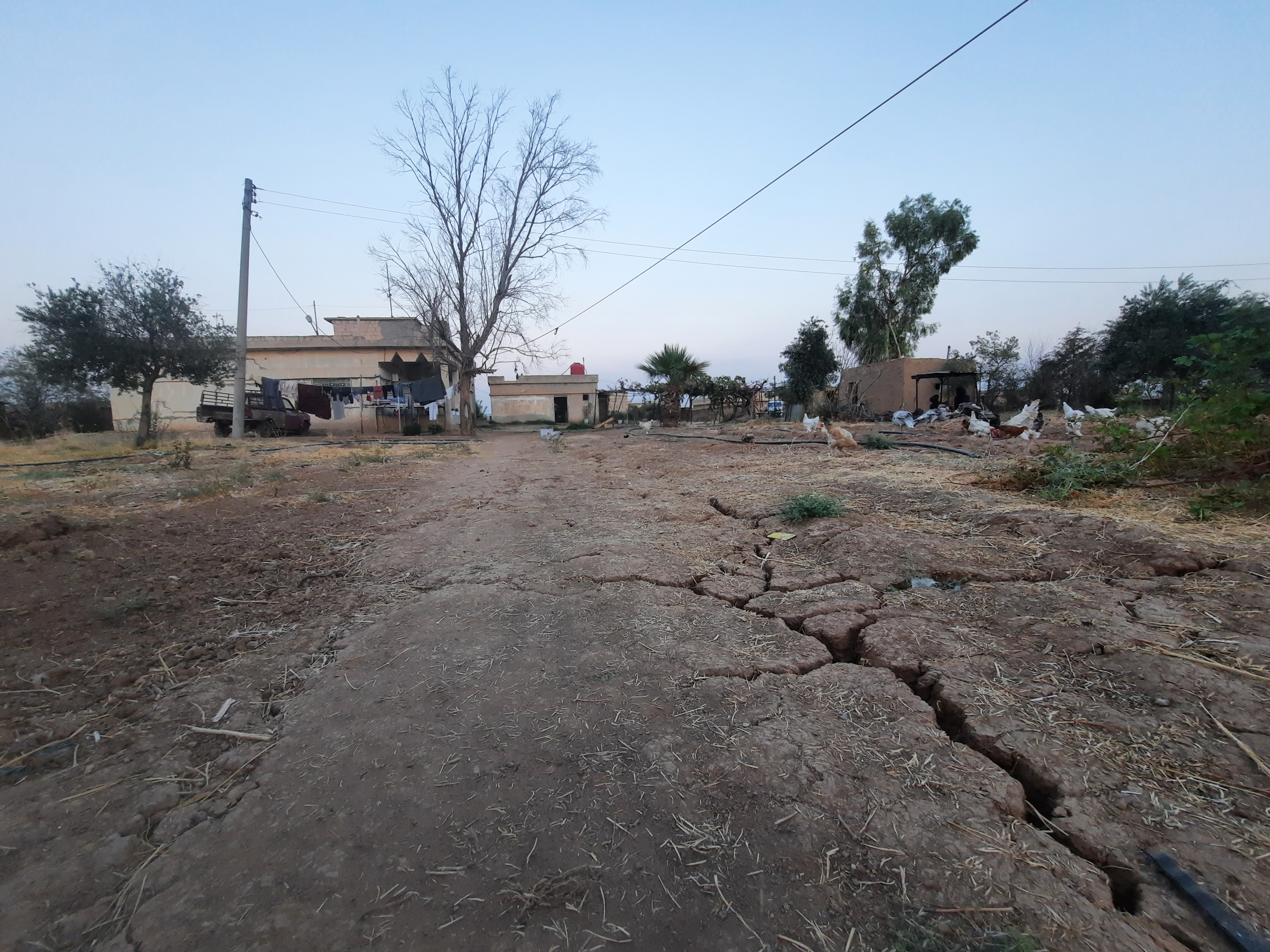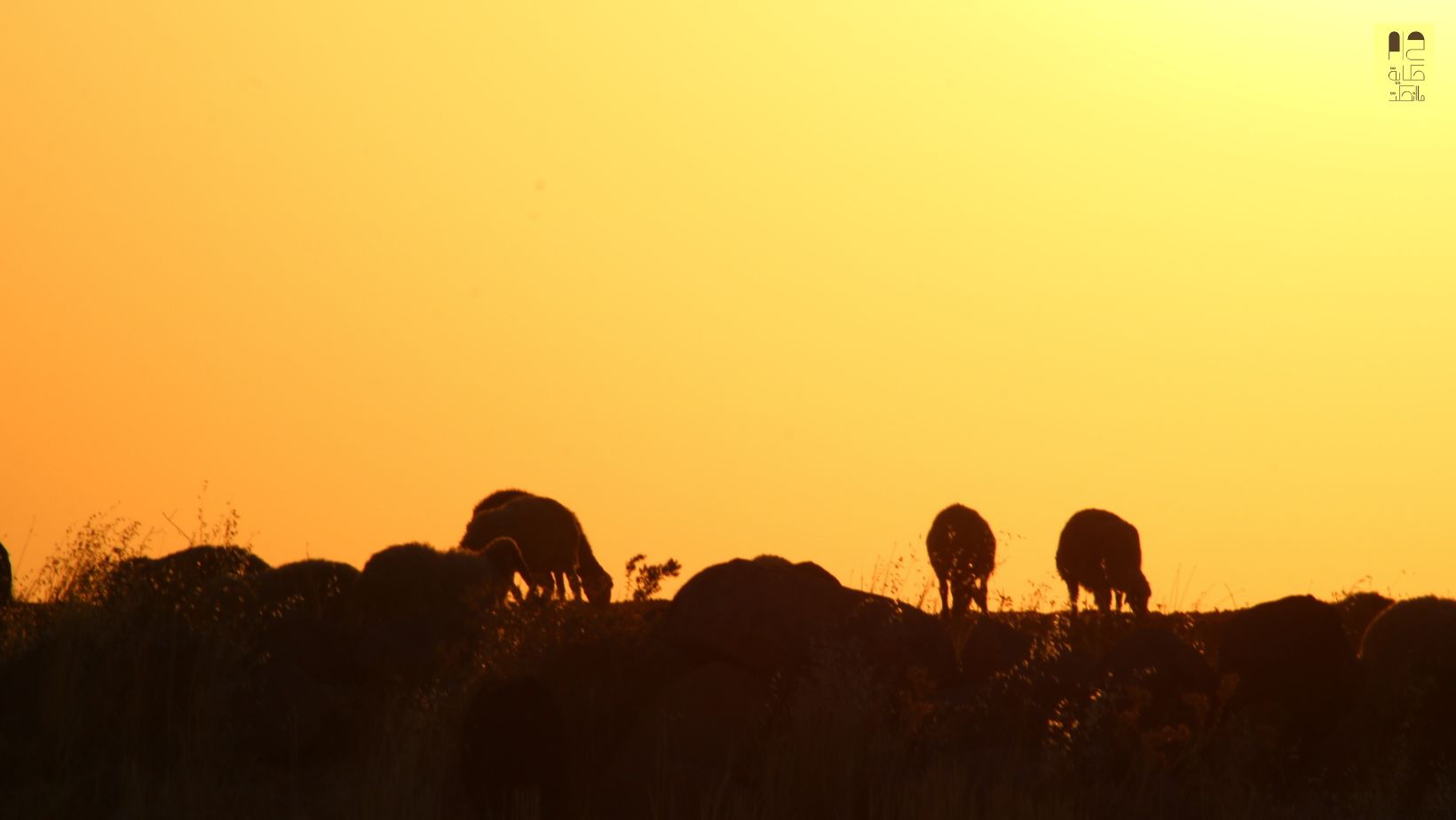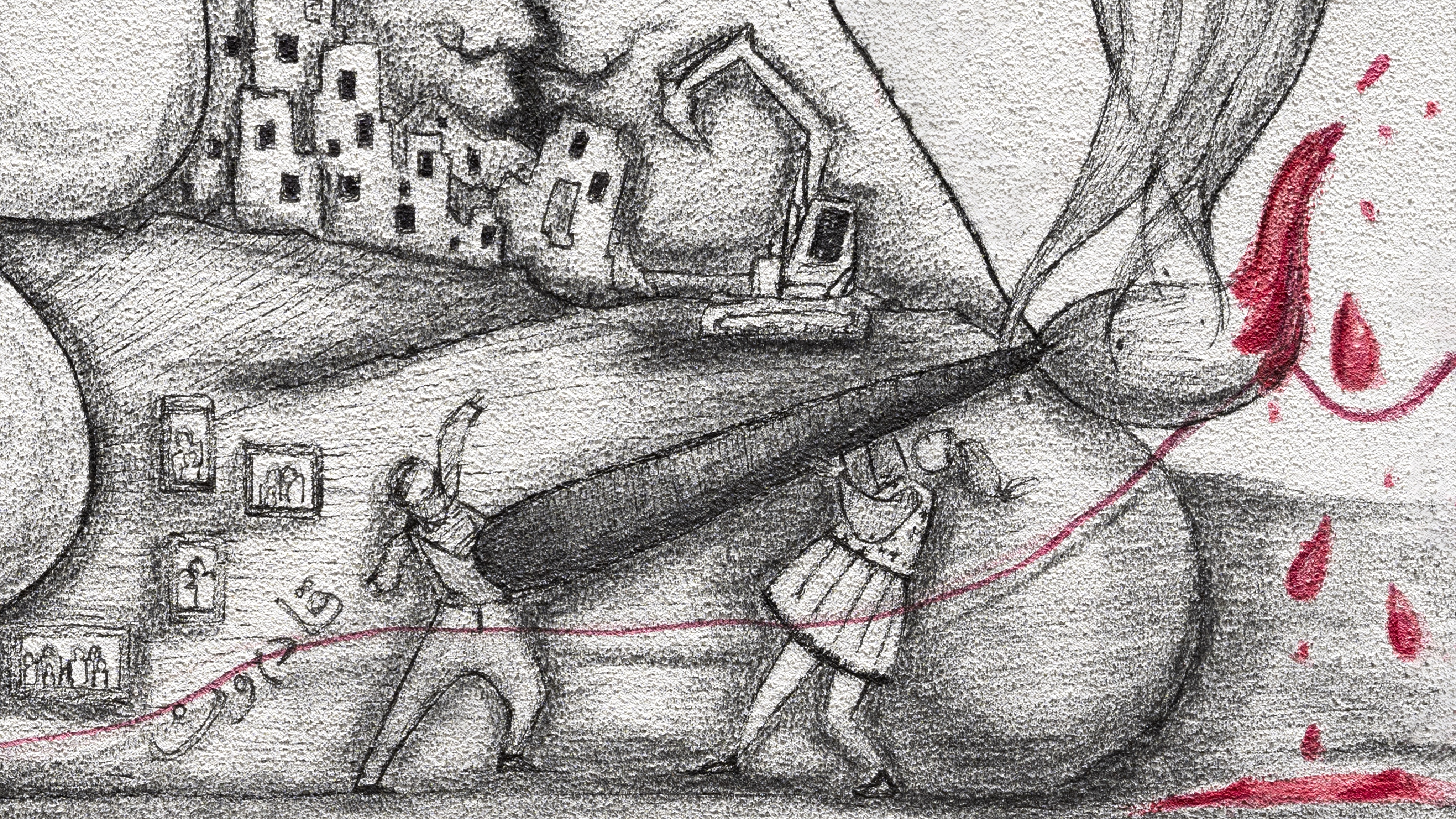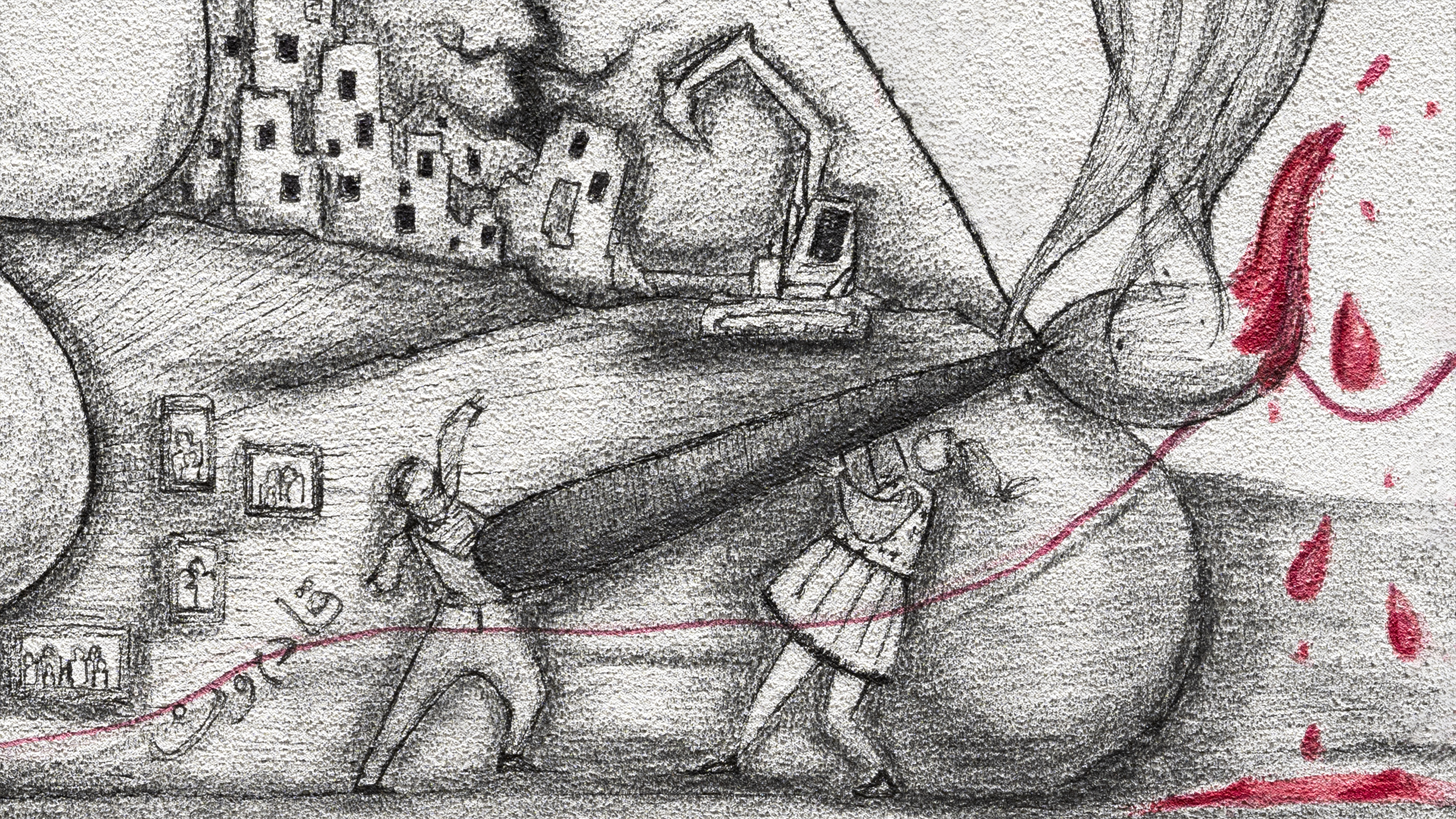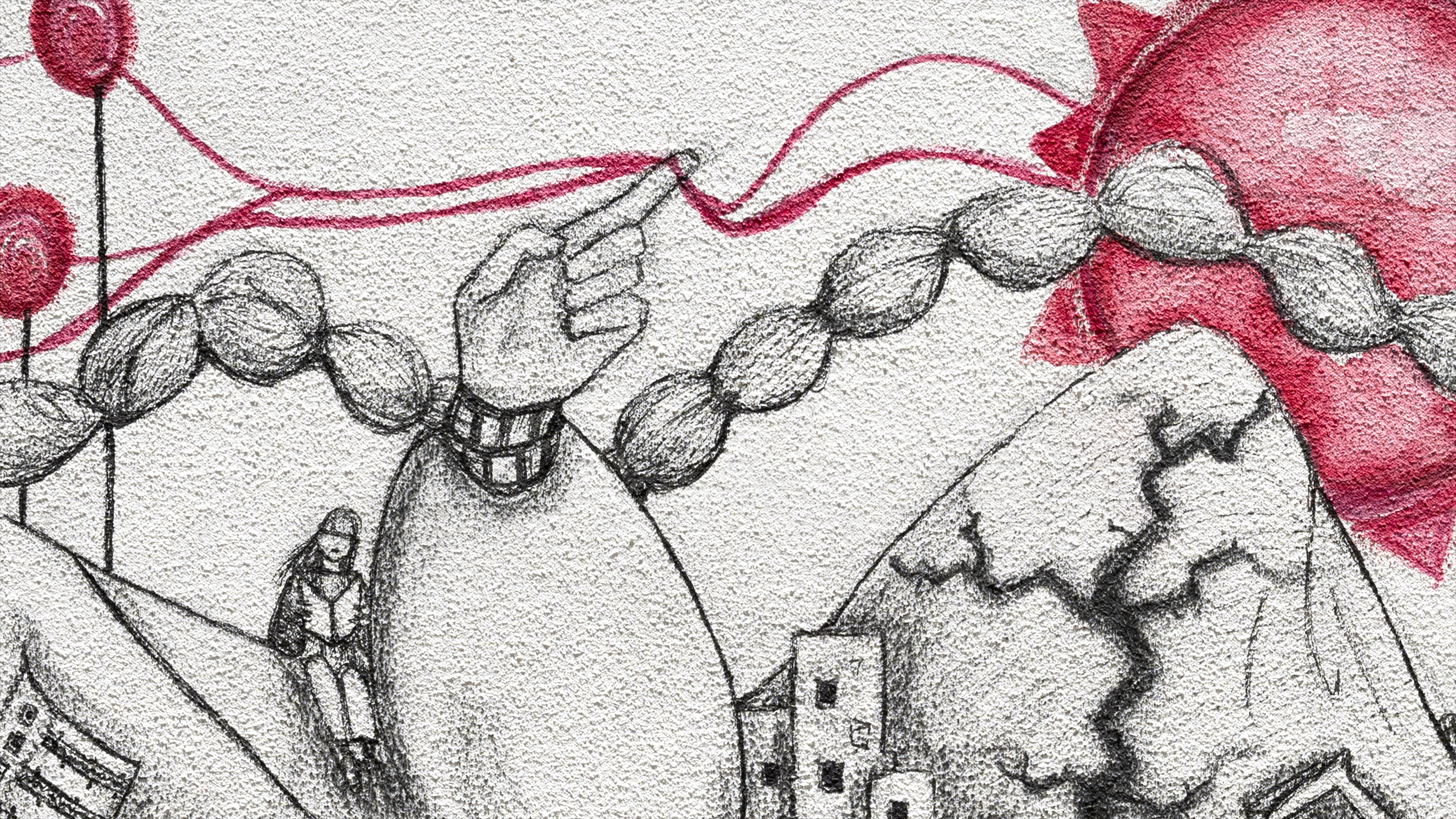“This article was produced within the project «Empowering the Next Generation of Syrian Women Journalists» in partnership between the «Syrian Female Journalists Network» and «UntoldStories». This article was produced under the supervision of journalist Rukaia ALabadi.”
In the village of Tal Aouda, one of the villages near the city of Qamishli in north-eastern Syria, Amani Mahmoud, 26 years old, stands since the early hours of dawn with dozens of girls on the side of the road, waiting for public transportation in blazing summer heat and chilling winter. They head daily to work in the city of Qamishli, after their lives turned upside down, and their struggle increased in balancing work and family life.
Amani used to work with her family in agriculture in her village, Tal Aouda, to assist them in earning an income. “We used to work in the agricultural fields for about half a day,” she says. “We had time to rest, visit friends and relatives, and do other chores, plus the workplace was close to home.”
In the summer of 2021, Amani suffered a heat stroke due to high temperatures, forcing her to undergo lengthy treatment and stop working for several months. During this period, Amani and her family began to notice the effects of radical climate changes in their village and the surrounding areas, from delayed rainfall to rising temperatures, resulting in massive losses in their crops. “Climate change has affected our lives, our crops, and the ways we used to earn a living from agriculture.”
As a result of climate change, agricultural production has declined in recent years, forcing many girls to drop out of school and move to the city of Qamishli, seeking job opportunities to support themselves and their families while adapting to the difficult conditions of life.
Agricultural Land Shortage
Until mid-April 2023, the Jazeera regions in Syria recorded rainfall quantities below their annual averages, according to the Syrian Ministry of Agriculture and Agricultural Reform. The Economy and Agriculture Authority, affiliated with the Self-Administration in northern and north-eastern Syria, also announced that the rainfall during the winter season of 2022 in Qamishli city was 22% below the annual average.
Adnan Jamo, the manager of the Agricultural Guidance Unit in the village of Aouda, says: “During the recent years, from 2018 to 2020, the rainfall percentage was good, prompting farmers to rely on seeds stored during that period. However, from the beginning of 2020 until 2023, crop yield has declined by 80% due to insufficient rainfall, drought, and sandstorms.”
According to a report by the Food and Agriculture Organization (FAO) published in 2021, “the shortage and uneven distribution of rainfall during the agricultural season 2020/2021, accompanied by heatwaves, rising costs of necessities, limited availability of water for irrigation, and the increased cost of fuel needed for pumping, resulted in a contraction of the area allocated for grain cultivation.”
The table below illustrates the shortage of cultivated areas in the village of Tal Aouda and the decline in agricultural production according to the Agricultural Guidance Unit in Tal Aouda village:
| Annual Village Production | Production per Hectare | Cultivated Area | Year |
| 3300 Ton | 3000 Kg | 1100 Hectare | 2019 |
| 1330 Ton | 100 Kg | 950 Hectare | 2020 |
| Zero | Zero | 980 Hectare | 2021 |
| 360 Ton | 400 Kg | 900 Hectare | 2022 |
| 350 Ton | 700 Kg | 500 Hectare | 2023 |
Effects of Climate and Political Changes
Many girls in the village of Tal Aouda were forced to take on additional burdens and responsibilities to ensure their livelihoods. Amira (a pseudonym), 24 years old, shares the same climate challenges with the rest of the girls in the village, including rising temperatures, lack of rainfall, and increased prices of fuel, fertilizers, and non-improved seeds. Amira's family suffered massive losses in agricultural production and agricultural crop expenses, especially in the past year.
Amira, dressed in a black dress, with signs of fatigue and exhaustion on her face, tells her story. “Our land used to provide us with a decent income without having to work other jobs. Our reliance and focus were primarily on agriculture, the profession we inherited from our ancestors.”
Amira worked in agriculture while attending school, but the village's conditions, its climate, and the economic and political situations forced her to move to the city for work. “We felt a significant difference between living in the village and the city after being landowners and farmers,” says Amira.
A report released by the organization 'Women for Climate Justice International' titled 'Even Climate Change Discriminates Against Women,' indicates that the impact of climate change and its consequences on women may be up to fourteen times greater than that of men.
Due to the Syrian government's compulsory military service for men, many young men in the village had to make difficult decisions, with their options being either migrating or staying in the village without jobs. However, some young men chose to work in the city and reached it by smuggling through agricultural lands, covering a distance of 35 km round trip from neighboring villages instead of the original 14 km between the village and the city of Qamishli.
These factors further burden women and girls in the village, including Amira, who was compelled to work in the city to support her family after her younger sisters stopped working there."
The United Nations Framework Convention on Climate Change (UNFCCC) confirms that women, especially those living in impoverished and conflict-ridden regions, face more risks and burdens due to climate change.
In the same context, women and girls carry the responsibility of bringing clean water for their families. After the destruction of the main water network in the village due to the war since 2013, the village residents started relying on available groundwater for drinking and irrigation.
For Amani Mahmoud, the process of fetching water requires double effort. She carries plastic containers on her shoulders twice a day before going to work and upon returning, adding an extra task to her day, as getting water takes about a quarter of an hour. “I bring water from one of the nearby wells because we don't have our own well,” Amani says. “No one else in the house does this task, despite having my younger brothers at home. It seems like I am the one responsible because I am a woman, and it's part of my role.”
According to a report issued in June 2023 by UNICEF and the World Health Organization “women and girls go on long journeys to collect water, which makes them waste their time for education, work, and leisure, and exposing themselves to the risk of physical injury and dangers on the way.”
Flor Neumann, the head of the Gender Equality team at the United Nations dealing with climate change, also pointed out that “climate impacts, especially extreme weather events, affect the roles of women and men worldwide, particularly in rural areas.”
Challenges of Livelihood in the City
After the passing of Amani Mahmoud's mother, she became the primary provider for her family. Initially, she worked transporting water crates alongside other girls, unloading the cargo of four large mobile vehicles between shops and restaurants. The working hours extended from eight in the morning until five in the evening. At times, work tasks required carrying fifty-kilogram rice sacks on their backs.
“Due to the demanding work and carrying heavy loads, my menstrual cycle starts at unexpected times, and I have to take injections to alleviate the pain. I can't express my incapacity to carry all these heavy loads in front of the supervisors because I am in desperate need of this job,” says Amani.
Amani receives a weekly wage of fifty thousand Syrian pounds. However, she finds herself obligated to spend a portion of this income daily on transportation costs, totaling six thousand Syrian pounds. “The young men at work are qualified, supervise the girls, and their wages are higher than ours.”
She is compelled to change her job whenever she experiences fatigue and psychological exhaustion from work. When we first met her, she worked in carrying and lifting, but she now works in a bakery, impacting her mental state and making her feel unstable, according to her.
According to a United Nations expert, “when gradual or sudden disasters occur and jeopardize livelihoods, communities may resort to adverse coping mechanisms, compelling women and girls into perilous choices for survival.”
Ghada (a pseudonym), 15 years old, endures similar hardships, as she had to leave primary school in 2013 due to the tough financial conditions her family encountered. Her father was unable to bear the educational costs for her and her sisters back then.
At that point, Ghada started working in agriculture with the girls in the village. With a substantial drop in agricultural production in the village and limited resources due to climate variations, the number of farmers depending on crops diminished, resulting in her gradual job loss.
Ghada, alongside some women and girls from the village, moved to the city of Qamishli in pursuit of job opportunities to sustain herself and her family. In a low voice, she tells us about her city job, stating: “I witnessed numerous girls relocating to the city for work; I shadowed them multiple times until securing a position in a potato chip manufacturing factory. My duty involves transporting and packing potatoes in the refrigerators.”
“We are approximately fifteen girls from the village employed in the same factory, and we don't have days off. If we want a day off, we must bear the expenses, subtracted from our already low salaries, with extended working hours. Upon any work mishap, we face immediate dismissal,” expresses Ghada.
Ghada's occupation takes a toll on her well-being, as she developed sensitivities due to the fragrances of spices in the factory. Due to the unavailability of personal protective masks and enduring prolonged periods on her feet, she presently grapples with inflammation in her knee nerve. Furthermore, Ghada confronts additional challenges at work, such as the lack of air conditioning during both summer and winter, along with the absence of health insurance ensuring ample protection. She remarks: “I am on the lookout for an alternative job to leave this one, and if my family didn't need it, I wouldn't have engaged in this work and stayed in my village with my dignity intact.”
In this context, Reem Al-Salem, the United Nations Special Rapporteur on violence against women and girls and its causes and consequences, says in her report that “climate change is the most serious threat for women and girls, with long-term effects on both new and existing forms of gender inequality.”
The Decline of Agricultural Support in Tal Aouda
In November 2018, the Syrian government issued the Nationally Determined Contributions (NDCs) as part of the Paris Agreement, presenting future visions and policies to counter the impacts of climate change for the 2020/2030 period. The document emphasized measures to mitigate emissions across various sectors, including agriculture, aiming to enhance the sector and address the effects of global warming and the repercussions of war, reaffirming the commitment to achieving the goals of the Paris Agreement.
Agriculture and livestock breeding remain the primary pursuits for most inhabitants of Tal Aouda village. Agricultural activities in this village revolve around cultivating wheat and both summer and winter crops like barley, coriander, lentils, and cumin. The village is renowned for its agricultural output, making substantial contributions to wheat and barley production and earning its place as one of the most productive villages in north-eastern Syria.
However, due to the drought that struck the region and the absence of support from governmental and non-governmental bodies, numerous farmers, both men and women, lost their agricultural lands and their jobs in agriculture. This resulted from insufficient rainfall, rising temperatures, and the depletion of wells dependent on rainwater.
As per the Agricultural Guidance Unit in Tal Aouda village, the count of groundwater wells is 205, with around 43 wells fully ceasing operation in recent years. Furthermore, 162 wells operate intermittently, functioning between an hour to an hour and a half per day due to power outages.
The head of the Agricultural Guidance Unit for Tal Aouda village, Adnan Jamo, states: “the village is currently facing challenging times due to drought and the interruption of the Jaghjagh River since 2015, which we relied on for irrigating agricultural lands.”
In the past years, farmers received support from the Syrian government, providing seeds of improved varieties from other regions such as Manbij, Ras al-Ain, and Tal Tamr. Fertilizers were imported from phosphate centers in Homs. At that time, the village's situation was satisfactory, according to the villagers.
In 2014, the Syrian government ceased providing necessary support due to the war and road closures, significantly affecting agriculture. Adnan Jamo says: “the Syrian government started providing non-improved seed varieties to the residents, which marked a decline in the agriculture rate.”
Later, in 2015, the Food and Agriculture Organization (FAO), a United Nations agency, provided support with seeds and fertilizers. However, they abruptly stopped providing aid in 2019.
In this regard, a former contracted agricultural engineer with the FAO (who declined to mention her name) mentioned that “the reason for the FAO's support discontinuation for villages in Qamishli, including Tal Aouda, was due to the unavailability of approved and improved varieties from the Agriculture Directorate in Al-Hasakah province.” She added that “FAO projects in north-eastern Syria were recently halted, as the organization's management in Damascus requested a focus on other areas like Aleppo, Tartus, and Latakia due to the lack of urgent need in Hasakah province.”
According to a special report by the Food and Agriculture Mission to Syria for the assessment of food supply crops in 2021 “the Crop Assessment and Food Security Mission is annually conducted in collaboration between the Food and Agriculture Organization and the World Food Programme in the Syrian Republic, between 2013 and 2019, excluding the year 2015. The restrictions imposed on international travel following the spread of COVID-19 hindered the comprehensive implementation of the mission during 2020.”
Adnan Jamo, the head of the Agricultural Guidance Unit in Tal Aouda village, says: “we have been in contact with the agricultural directorates in Hasakah, the Agriculture Department in Qamishli, and the FAO to obtain necessary support for the village. Unfortunately, we have not received a response from these entities yet.”
With the absence of support from governmental and non-governmental entities, the greatest challenge remains on women in seeking ways to live and unstable alternatives. “If there were initiatives to adapt to climate change,” Ghada says, “we could return to our village, resume our normal lives, and work in agriculture near our families.”





